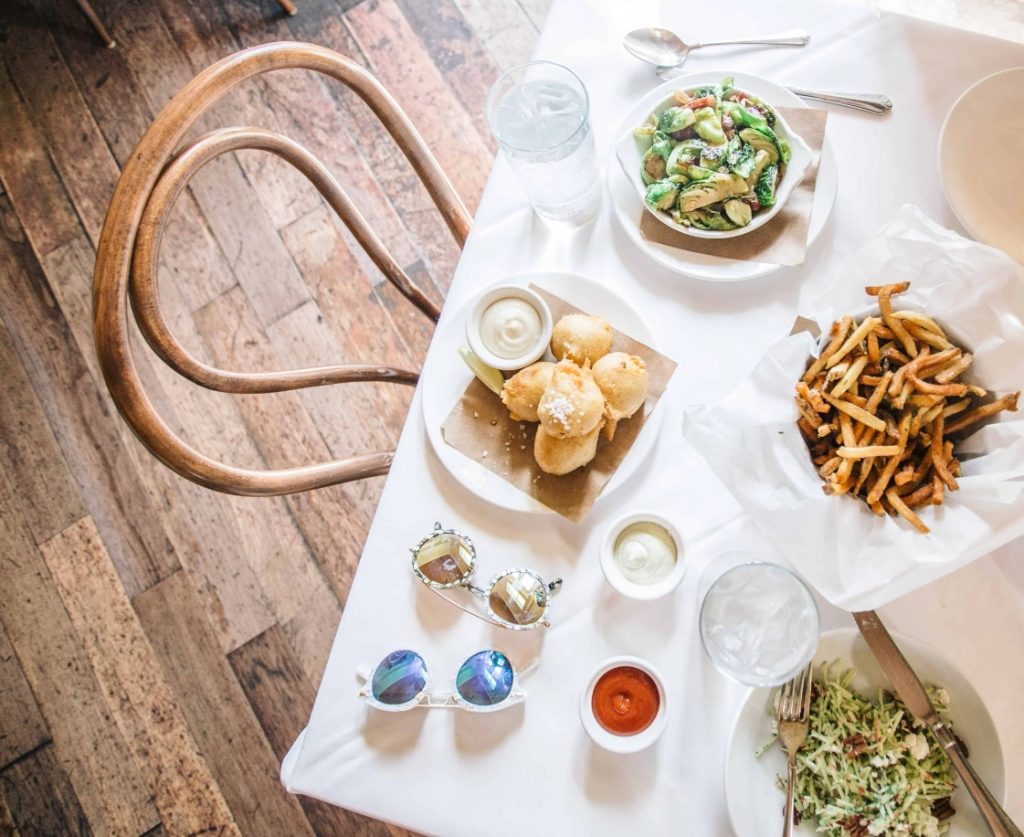Opt for a table illuminated by natural light. While any lighting can seem suitable, it’s important to note that not all lighting is ideal for photography. Fluorescent or yellow light, for instance, can pose challenges during editing, even with exceptional editing skills. If you choose to use natural lighting over artificial, opt for a table by the window or outside.
Choose a table that is light in color. (Marble, Light Wood)– Avoid dark tables like cherry and walnut. Reds and browns can make your photos look all kinds of different colors, which are hard to edit. It’s also difficult to take photos of food when the table is dark, unless you use a moody or desaturated editing style. If you love color, dark tables will be your worst enemy. Use white plates under the food or empty plates on top of your dishes to make a more colorful and texture background.

Only photograph food that is appetizing. Don’t take pictures of everything you order to eat. Even if it is good, I remove any food that looks unappetizing. It includes ribs (with bbq), saucey foods, and runny egg yolks. If the picture is taken above, burgers will look fine. Photographs of fruit, salads, smoothie bowls, and desserts are all stunning.
Add hands to frame– I like to add a human touch to photos, so I try to include my hands whenever possible. Grab your silverware, cup or bread. Keep your hands soft and relaxed. Otherwise, they will look stiff and clubby.

Test your shot, then add food to the gaps you see on the table. Rearrange the plates on your table to fill in any gaps. Use accessories to cover large spaces in your table. If your table still looks too big you can crop the image to add other items like distressed hardwood flooring or cool chairs.

When possible, choose symmetry. Symmetrical designs tend to be the most pleasing. Make sure that your cups are mirrored and you have your plates balanced either on one side or both sides of your photo.
Be on the lookout for background textures. If you have a table, floor or other surface with textured surfaces don’t hesitate to display them. Textures can make a photograph look even more amazing (think of colorful tiled floors or light hardwood flooring).
Try different angles. While flatlays are great, sometimes an angled shot is even better. Don’t hesitate to show your location and angle the shot if you think it will tell a good story.
